Vermes
Advanced Member level 4
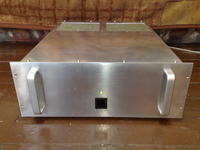
The aim of this project was to construct a replica of Krell amplifier KSA100 from only the former elements made in Poland. The assumption was that the device consisted of as far ass possible components of Polish production or a common foreign – transistors, resistors, capacitors, relays, transformer winding wire, connectors, sockets and even wires. In short – the amplifier was constructed as if it was built I Poland in the 80's.
Construction
Krell amplifiers are powerful devices both physically and electrically. Those features are also present in the replica. The amplifier is quite heavy – it weights almost 30kg, mainly because of the big power transformers of about 400VA each and big condensers' battery – 15000uF each. Because of the limited Uce voltage of transistors used, it was necessary to reduce the power voltage to maximum +-40V, what resulted in reduction in output power. That is why parameters of this device are closer to Krell KSA50. Mechanics, dimensions and number of power transistors make this device more similar to KSA100.
Parameters of the amplifiers:
- output power: 2x73W 8ohms, 2x127W 4 ohms, 2x212W 2 ohms
- bandwidth: 7Hz – 50Hz + 0-0,5dB and 4,5Hz – 120Hz + 0-1dB
- damping factor: 424 (8ohms)
When it is about the thermal or overcurrent security, the original Krell amplifier KSA100 was poor in total, because it had only thermo-bimetal berakers and joint network fuse. However, it had transistors with big 'SOA' area and a redundant construction, providing high reliability. In this model, there were used independent fuses of such values, that were easily burn in the event of overloading the amplifier. And by proper choosing the parameters of the delayed switching, the problem of high current surge could be ignored and fast-acting fuses could be applied. People generally consider a safety fuse as element too slow to provide effective protection.
Also, there are load delayed switching systems and protection against DC voltage, the same, which was used in Krell KSA100 MK2.
Tungsram transistors 2N3055 were used – 8 transistors on each channel. Their Uce voltage is up to 100V.
Topology of the system is not different than the original. Only exception is pseudo-complementary current level, because of some difficulties with finding a complementary one. Resistors in the circuits of the differential amplifier and a negative feedback loop are about 1 or 0,5-percent tolerance. In systems of soft-start and delayed switching of columns, Polish production relays R15 were used. Power diodes D01-10-01 with matching radiators were used in rectifier bridges. Speakers are laboratory screw terminals, which often could be found in old measurement devices. Two sets were mounted on the channel, in case of 'biwiring' or other experiments.
The plate design was Audio-Delta project, but the plate had undergone radical changes. The most significant was redrawing of low-power transistors' leads for the housings with base in the middle (ANSI model usually has the collector in the middle). Paths were adjusted to the pseudo-complementary system. Furthermore, one of the control transistors was rotated, and the plate a little bit elongated to fit the radiator on it. The plate was also enriched with delayed load switching system. Paths for overcurrent protection were present in the original plate, although they were also copied and modified.
The power supply is very stable because of the redundant choosing the transformers, secondary windings were wounded bifilary, so that the symmetry of the voltages is absolutely ideal, regardless of the power supply load. There is no concern about a possible raise, the normal DNE wire insulation should withstand minimum 200V, the measurement would show a breakdown voltage of almost 1kV. Transformers are very safe – a test for raise between primary and secondary side indicated threshold of about 8kV, so even much more than most transformers on the market.
The housing of the amplifier isn't the same as in the original KSA100, but the concept refers to the original. The whole remains in a sleek, visually number: transformer – rectifier – capacitor – an electronic system - the slot. Simplicity, ease of assembly and disassembly is one of the main assumptions underlying this project. The four beams, three sheets, panel and a handful of screws make the extremely robust cover, even though natural-flowing aluminum. Back handles are much stronger – they are made of steel.
Like the original, forced cooling was applied, although it is constructed differently – instead of 'chimneys' of fans pumping air, there are normal, classic radiators used.
Acoustic impression
This replica persists in the original sound quality. The amplifier can easily play very complex instrumental tracks. This is the sound of high culture, tonal balance and detail, yet powerful and ruthless, 'sure'. Regardless of how far you turn the volume control right in the preamplifier and how much the amplifier is charged, Krell never for a single moment gives us a sense impression that it loses control, and so the device described does.
Conclusion
the device opts out of false allegations, underestimating Polish equipment in many respects. It was made without compromising and cost savings on quality components. It is a high performance amplifier with high output and parameters.
This is how the device presents:
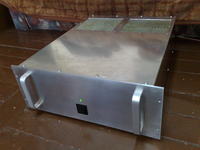

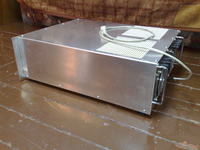
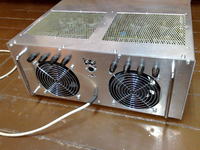

Inside the amplifier:
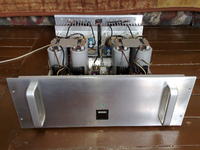
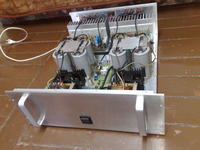
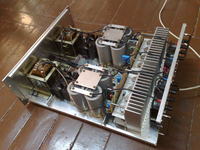
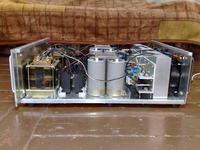
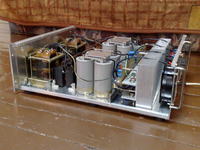
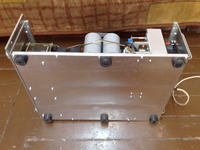
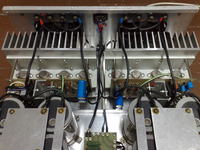
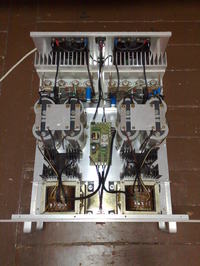
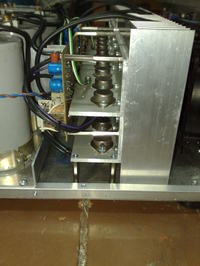
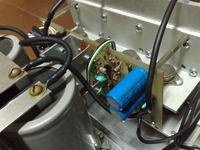
Pictures below show previous version with another, bigger power transformers which were deleted because of the sound generation. They determined the original weight of the device – 35kg. To deal with it, a special platform on wheels were made. The platform is shown in last picture.
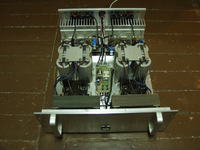
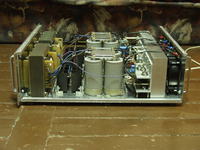
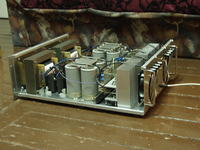
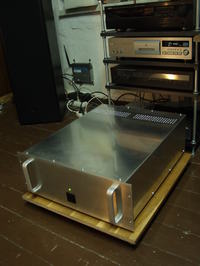
Link to original thread (useful attachments) – Wzmacniacz Krell KSA100 - polski klon w stylu lat 80-tych